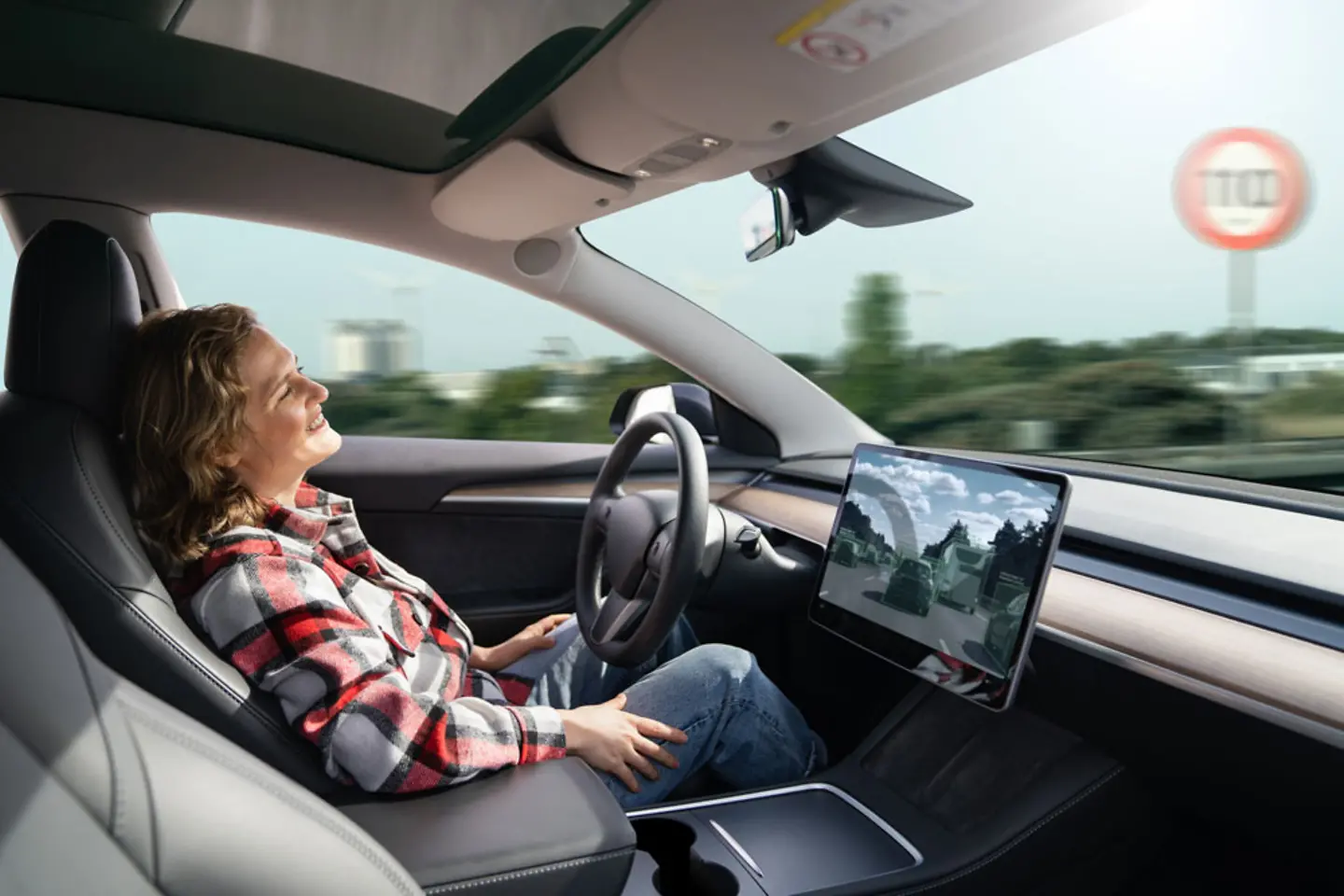
It will be several years before truly autonomous driving is possible. Until then, driving will be taken over step by step by systems in the vehicle. Manufacturers are currently developing vehicles that move automatically and are ultimately fully automated. But engineers and computers still have to overcome a number of technical hurdles, one of which is a stable and low-latency mobile network.
Teleoperated driving, stage 4 on the way to true autonomous driving, is the remote-controlled driving of a vehicle by an operator. Automated driving is only possible with mobile phone networks that offer stable data throughput, the shortest possible latency times, and uniform network coverage.
There are already concrete application scenarios for the remote-controlled driving of cars and trucks. In automated valet parking, drivers park their rental car or personal vehicle in front of the hotel, airport, or train station. A person then brings the car to the parking lot via remote control. On arrival, the car is driven up using the driverless parking function. In intralogistics, people drive trucks to their destination by remote control over fixed routes, for example to the warehouse after unloading a ship or to the parking lot at the end of production.
In the automotive industry, the development towards autonomous driving consists of five stages: assisted, semi automated, highly automated, fully automated, and autonomous. Assisted driving has been around for several years. Examples include cruise control, automatic distance control with adaptive cruise control, and automatic lane departure warning systems. In semi-automated driving, the car temporarily performs tasks itself. For example, it can simultaneously stay in the lane and brake or accelerate. Individual assisted driving systems are combined for this purpose. Semi-automated driving also includes automatic parking, which allows the driver to take his hands off the steering wheel for a short time. However, it is not yet possible to reach level 2 without a driver. A human must be able to monitor and correct the system.
You can display all external content on the website at this point.
I agree that personal data may be transmitted to third-party platforms. Read more about this in our privacy policy.
In the Campus FreeCity project, T-Systems, together with EDAG, DEKRA and other project partners, is researching the technical implementation of temporary teleoperation as a fallback for autonomous driving.
In a highly automated vehicle, a human driver is still needed, but can occasionally do other things, such as reading the newspaper. However, if the car gives an alert, the driver must be able to take the wheel again immediately. The vehicle can take over driving, overtaking, braking, and accelerating independently for a limited period of time. However, the level 3 car needs clear traffic situations, e.g. clear road markings or no oncoming traffic. The first models with highly automated operation are already available. However, the use of these systems in road traffic is not yet legally permitted.
Car companies are currently also developing systems for fully automated driving. At level 4, the technology takes over all driving tasks independently. A vehicle is capable of covering distances without human intervention. A human driver only has to take the wheel when the system demands it. The final stage corresponds to true autonomous driving. The vehicle is completely guided by the system from start to finish. The driver is more of a passenger at this stage. This is an important difference from a legal standpoint, because in the event of an accident, it is not the owner of a car who is liable, but the manufacturer. As yet, however, there is no precise legal framework for autonomous driving.
For remote-controlled driving, cars need two components: an onboard unit in the car and a control center from which a driver controls the car. The control unit in the car gives the driver access to functions such as the brakes, accelerator, and steering. In return, the onboard unit provides a real-time view of the current road situation. A vehicle needs at least four HD cameras for this. For the video stream, the data must be transmitted stably via the mobile network to the control center. Emergency programs ensure safety in the event of a power failure or an unforeseen event. The cars then independently brake or initiate an evasive maneuver.
Latency on the mobile network is a critical variable for remote-controlled driving. It determines both the driver's reaction time and the transmission of the traffic situation. Only a maximum latency of 50 milliseconds enables a vehicle to be steered remotely at low speeds. This means that teleoperated driving is already possible on the 4G/LTE network, provided that sufficient available capacity is ensured in a cell. The 5G network will reduce the latency to below ten milliseconds. At the same time, many more end devices, including connected cars, will be able dial into a cell without significantly worsening the latency.